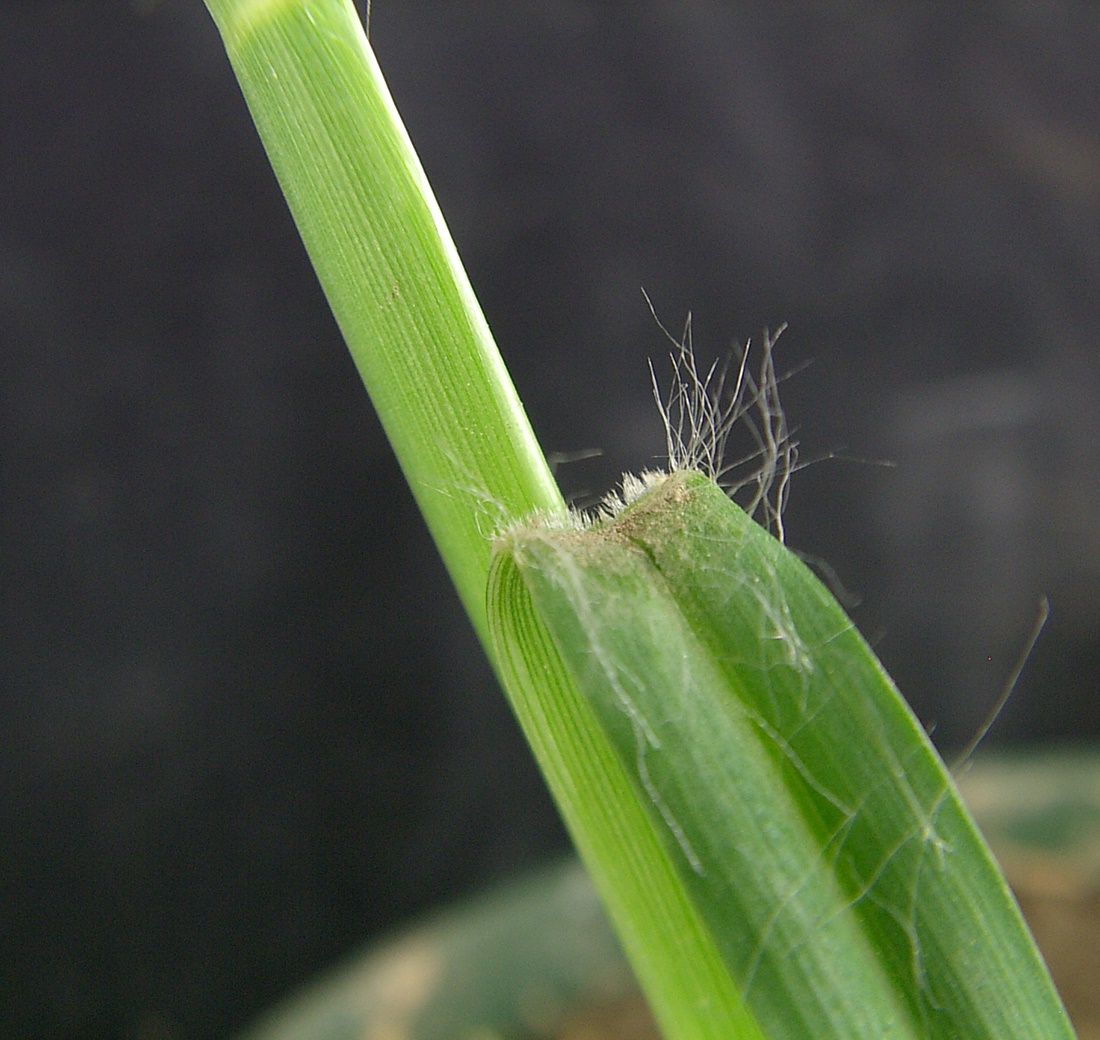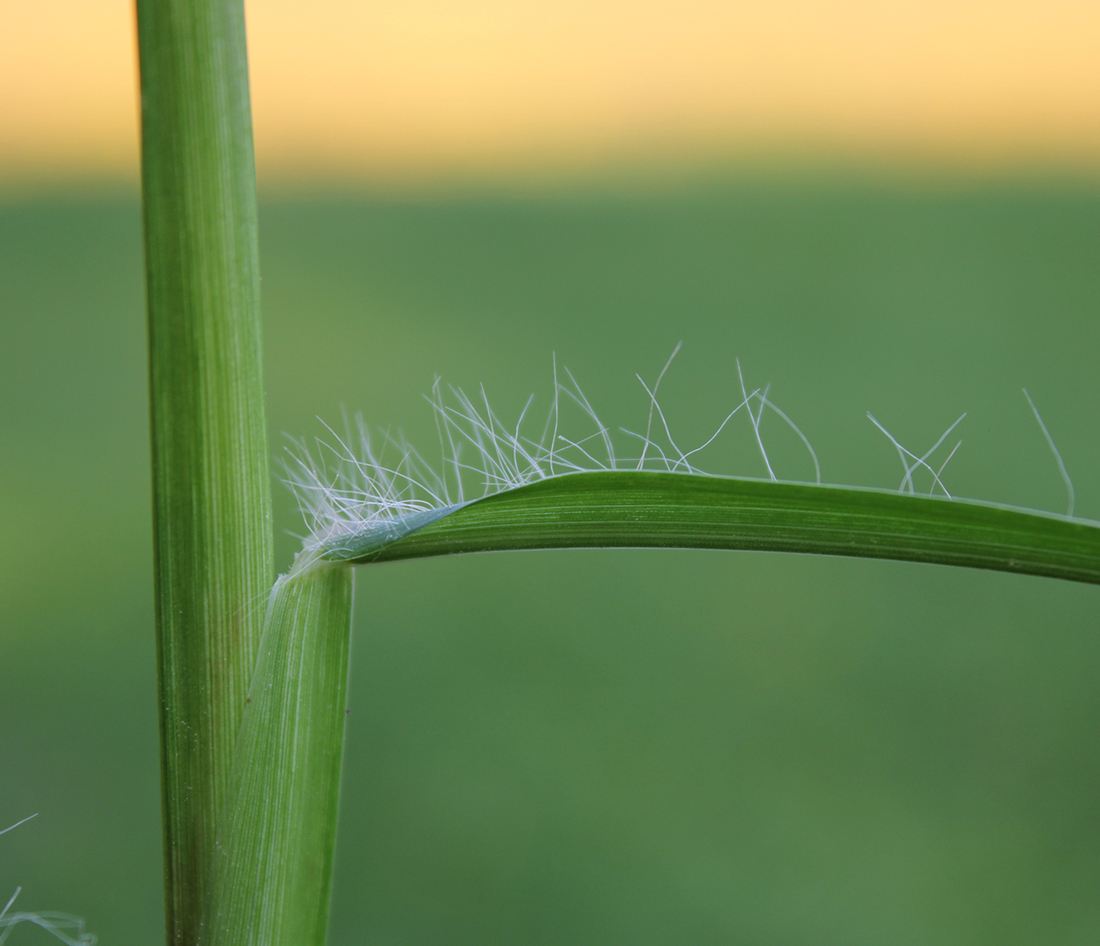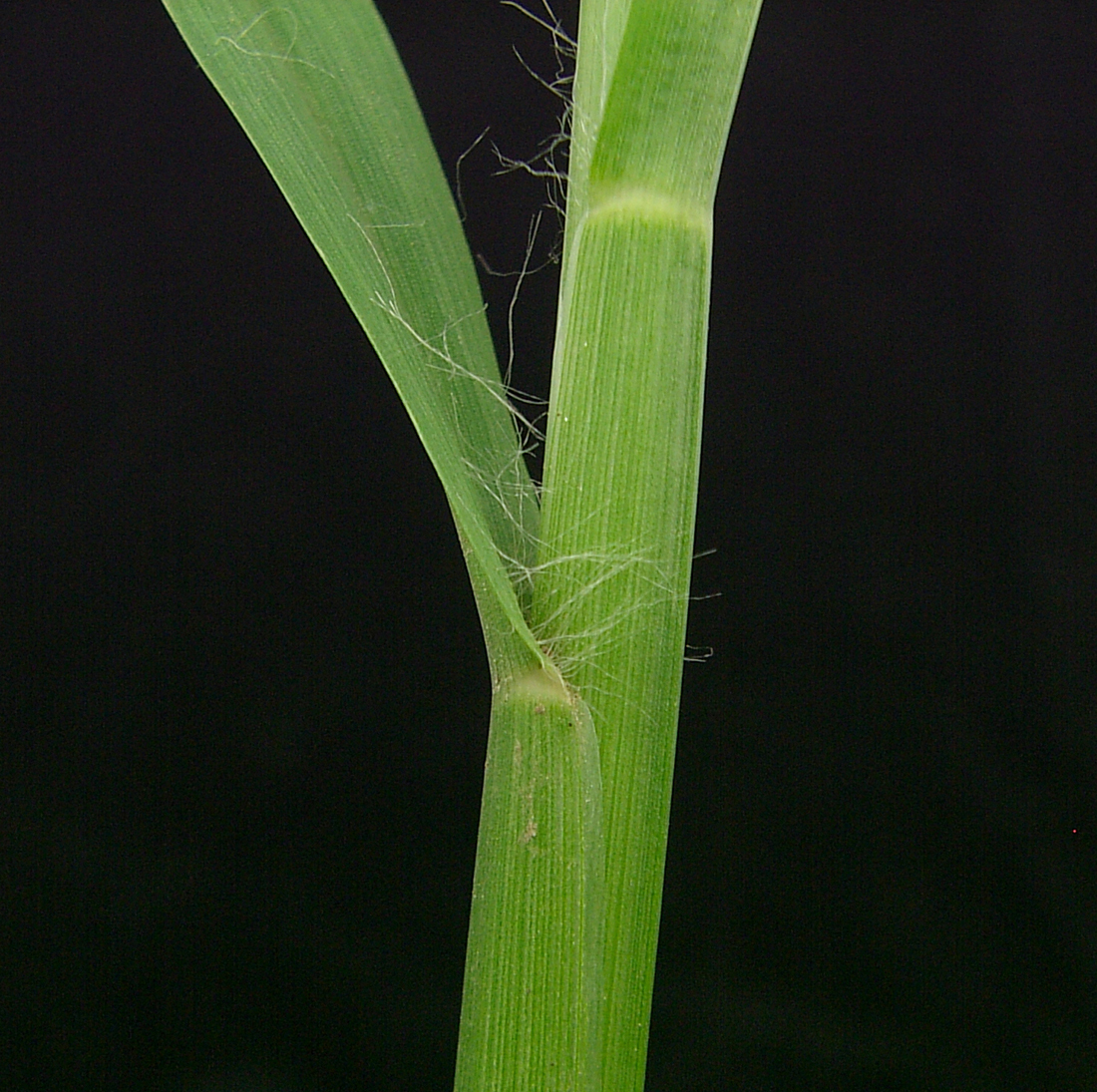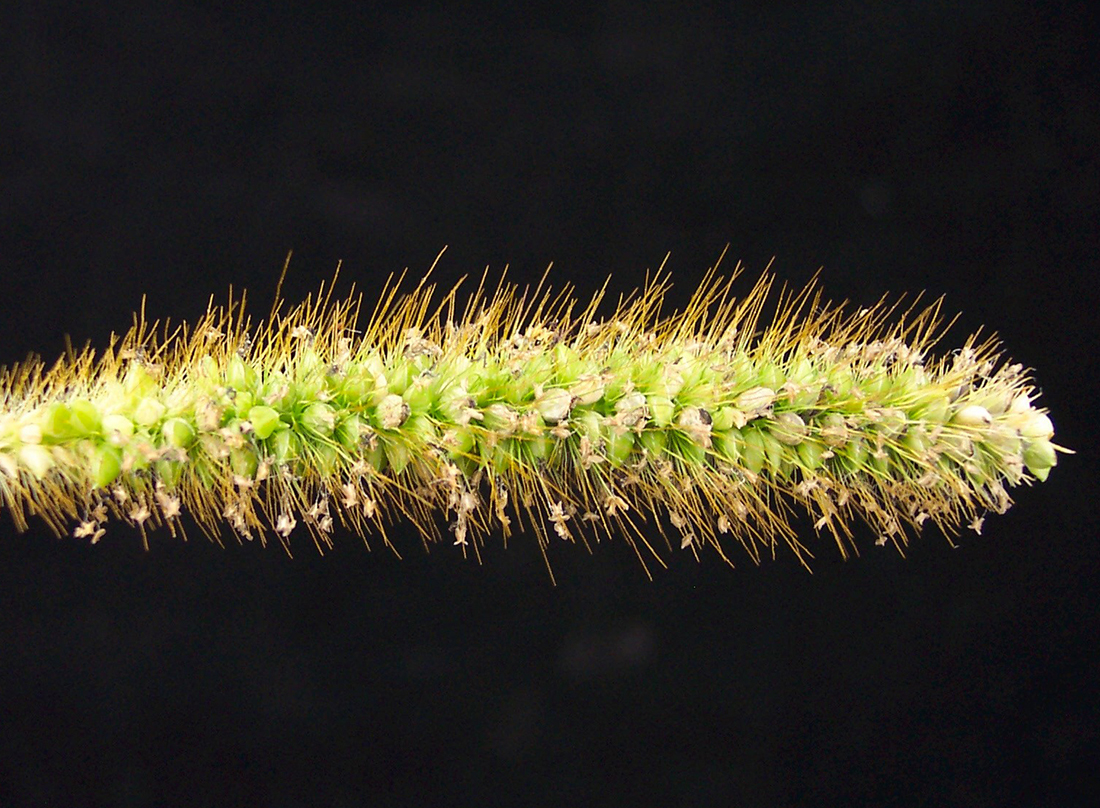Yellow Foxtail
- Grass (Poaceae family):
- Setaria pumila (Poir.) Roem. & Schult.
- EPPO code:
- SETLU
- Other names:
- Bottle brush, bottle grass, bristle grass, millet, pigeon grass, wild millet
Species information
- Lifecycle:
- Annual.
- Propagation:
- Reproduces by seed.
- Emergence:
- Yellow foxtail typically emerges later than other annual grass species (for example, green foxtail, witchgrass) and around the same time as eastern black nightshade.
- Habitat:
- It is found mainly in cultivated fields throughout the province.
- Competitiveness:
- Agriculture and Agri-Food Canada research has shown that yellow foxtail densities of 20,000 plants/ac can result in a 5% yield loss in corn and soybeans.
- Resistance:
- A number of populations are resistant to Group 5 (for example, atrazine) herbicides in Ontario.
Identification clues
- Auricles:
- None.
- Ligule:
- Hairy.
- Leaf blade:
- The base of yellow foxtail’s leaf blade is covered with a number of straggly hairs that are roughly 1–2 cm in length.
- Leaf sheath:
- The margins of the sheath are hairless.
- Stem:
- Young seedling plants appear to have a round stem, but as the plant gets older the stem is distinctively flat. Of the common annual grasses in Ontario, only yellow foxtail and barnyard grass have flat stems.
- Seed heads:
- Yellow foxtail has a spiked seed head, typically 4–6 cm long, with larger seeds than that of other foxtail species, but shorter bristles.
- Roots:
- Fibrous.
Often mistaken for
I know it's not Barnyard grass because yellow foxtail has a hairy ligule, but barnyard grass has no ligule at all.
I know it's not Large crabgrass because yellow foxtail has a hairy ligule.
I know it's not Proso millet because yellow foxtail has a flattened and hairless leaf sheath.
I know it's not Witchgrass because yellow foxtail does not have a hairy stem.




Updated: January 13, 2023
Published: January 13, 2023